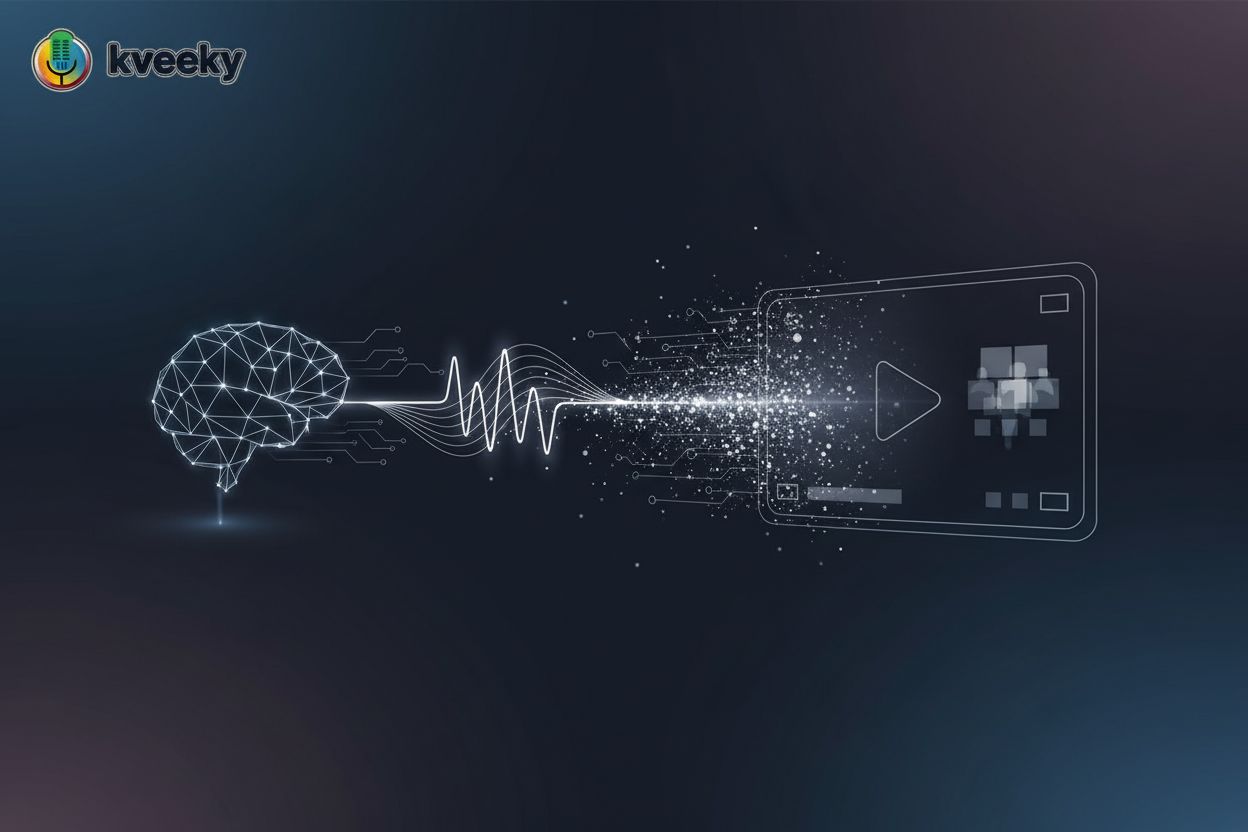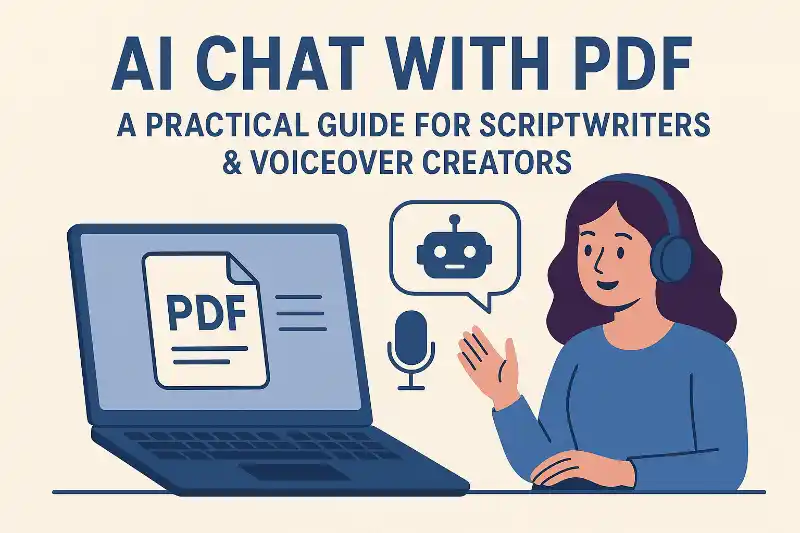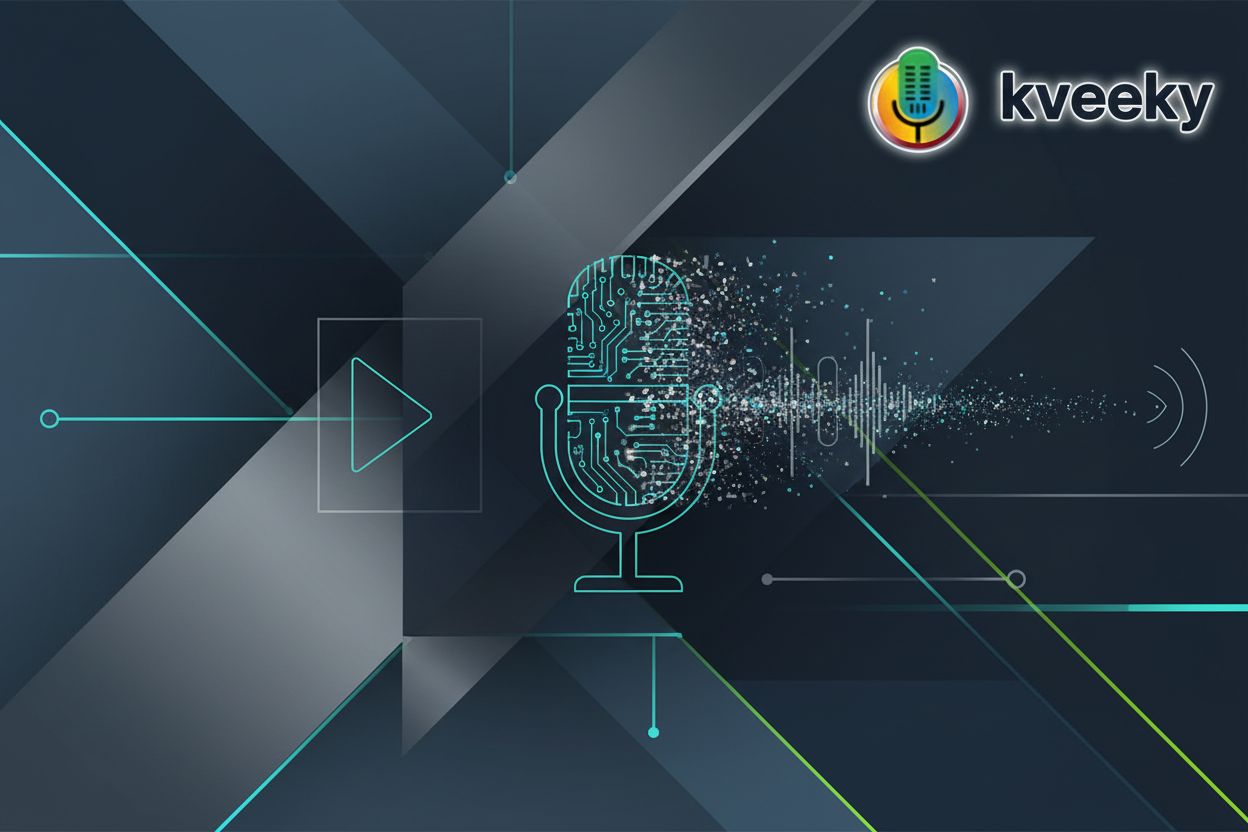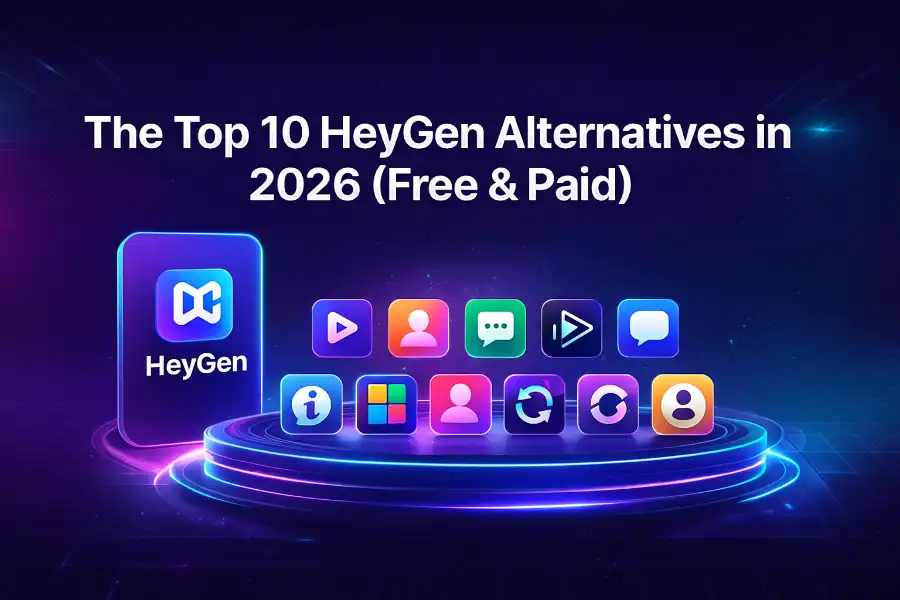AI Voice Creation A Deep Dive into Neural Network Architectures
TL;DR
The Landscape of AI Voice Generation Neural Networks Emerge
Alright, so you're probably wondering how ai is making all these crazy realistic voices, right? Well, it's all thanks to neural networks. These things are seriously changing the game.
Early speech synthesis was pretty clunky. It relied on stringing together pre-recorded bits of audio. Think Frankenstein, but with words.
Concatenation synthesis was like, the original method back then, but it sounded super choppy. It was hard to get any real emotion across, ya know?
Then, we got statistical parametric synthesis. This used math to try and model how voices sound, like frequency and duration, but it still wasn't great. Techniques like Linear Predictive Coding (LPC) were used, but they struggled to capture the natural prosody and nuances of human speech, often resulting in a somewhat artificial sound.
Hidden Markov Models (hmms) were the go-to for a bit. While they had some advantages, they often sounded robotic and over-smoothed. Like when you overdo the airbrushing in a photo. This was partly because HMMs are inherently limited in capturing the complex, non-linear dynamics and subtle variations present in natural human speech, leading to a smoothed-out, less expressive output.
The limitations of these traditional methods, particularly their inability to capture the intricate dependencies and natural expressiveness of speech, paved the way for a revolution. Then deep learning showed up and blew everything outta the water!
- Neural networks could learn way more complex speech patterns than those old hmms.
- They're much better at capturing the nuances of speech, so we get less robotic sounds and more natural, expressive voices. It's like going from a flip phone to a smartphone.
Neural nets are awesome at voice generation because they can learn the super complex patterns in how we talk.
- They capture the little nuances that traditional methods totally miss.
- This lets us get more natural, expressive ai voices that, frankly, sound more human.
So, what's this all mean for the real world?
- Well, ai voiceovers are saving time and money in tons of places, like video production, e-learning, and video games.
- Plus, ai can do multilingual voiceovers and customized voice options, so it's way easier to reach a global audience.
As ai voice tech is being used in all sorts of places.
Now, we'll dig into the specific neural network architectures that are making all this voice magic happen.
Key Neural Network Architectures Driving AI Voice Synthesis
Did you know that ai can now generate voices so realistic, it's kinda freaky? It's all thanks to some seriously clever tech, specifically neural network architectures. Let's dive in, shall we?
We'll follow a general progression from earlier influential models to more recent advancements:
- First, we'll explore WaveNet, a foundational model for raw audio waveform generation.
- Then, we'll check out Deep Voice, a multi-model approach that broke ground in its architecture.
- Next, we'll cover Tacotron and Tacotron 2, which pioneered end-to-end spectrogram generation using attention.
- After that, we'll get into how Transformers leverage parallel processing for efficiency and improved context handling.
- We'll then look at FastSpeech and Beyond, focusing on speed and controllability.
- Finally, we'll discuss Flow-Based TTS (like WaveGlow) and GAN-Based TTS (like EATS), which offer alternative approaches to modeling speech.
WaveNet is a game-changer because it directly models raw audio waveforms. Instead of messing with simplified versions of sound, it tackles the real, messy audio data head-on. Think of it like going from sketching a landscape to painting every single leaf.
- It's autoregressive, meaning it predicts each audio sample based on the samples that came before it. It's like saying, "If the last few sounds were this, then the next sound is most likely that." For example, P(sample_t | sample_{t-1}, sample_{t-2}, ...) where the probability of the current sample is conditioned on all previous samples.
- It uses conditional probabilities to make these predictions. It figures out the chance of a particular sound happening based on what it's already heard.
WaveNet's architecture actually took inspiration from image generation models like PixelCNN and PixelRNN. These models generate images pixel by pixel, using the same autoregressive approach.
Deep Voice uses a multi-model approach, which means it's not just one network doing everything; it's a team effort. It relies on four neural networks working together to pull off tts.
- First, there's a segmentation model that figures out where the phoneme boundaries are. Think of it like chopping up the speech into its tiniest sound units. This was often achieved using specific types of recurrent neural networks (RNNs) or convolutional neural networks (CNNs).
- Then, a grapheme-to-phoneme conversion model steps in. You know how some letters sound different depending on the word? This model's got it covered. Common approaches include rule-based systems, statistical models, or neural networks trained on large text corpora.
- Next up is the phoneme duration and fundamental frequency prediction model. This predicts how long each phoneme should last and what the pitch should be. It's what makes the voice sound natural and not robotic. These predictions were typically made using feed-forward neural networks or LSTMs.
- Finally, a WaveNet-based audio synthesis model takes all that info and creates the actual audio waveform. WaveNet is a key component 'cause it can generate really realistic sounds.
One of the coolest things about Deep Voice is it can handle multiple speakers. How does it do that? Speaker embeddings!
Speaker embeddings are like digital fingerprints for voices. They capture the unique characteristics of each speaker. It's like a secret code that tells the model, "Hey, this is this person talking".
Tacotron's like, the first real attempt at making an end-to-end system for turning text into sound. It doesn't mess around with a bunch of separate models; it just takes text and spits out a spectrogram, which is basically a visual representation of the sound.
- It's a sequence-to-sequence model, meaning it takes a sequence of characters as input and produces a sequence of spectrogram frames as output. Think of it like translating one language to another, but the languages are text and sound.
- The attention mechanism is super important. It helps the decoder focus on relevant parts of the input text when generating each part of the spectrogram. It's like highlighting the important words in a sentence when you're trying to understand it.
- Tacotron takes in characters and gives out raw spectrograms. Pretty neat, huh?
Now, what makes Tacotron tick? It's all about the CBHG module. Think of CBHG as a fancy feature extractor.
- It's got a 1D convolution bank to grab important features, a highway network for smooth information flow, and a bidirectional GRU for understanding the sequence of those features. The convolution bank extracts local acoustic features, the highway network allows for deeper information propagation, and the bidirectional GRU captures contextual information from both directions of the sequence.
- CBHG is used in both the encoder and the post-processing network. It's like the special ingredient in a really good recipe, you know?
Tacotron 2 is basically Tacotron but, like, better. It makes some important changes-- tweaks to the old architecture.
- It uses convolutional layers and an lstm-based encoder that helps capture more nuances.
- Location-sensitive attention is another upgrade, helping the model keep track of where it's at in the text.
Transformers are really changing the game in tts, mostly because they're way more efficient. They're especially good at handling long dependencies in text, which is something older models struggled with.
- One of the biggest advantages is parallel processing. Unlike recurrent neural networks (rnns) that have to process data sequentially, transformers can do it all at once, making training and inference much faster.
- Multi-head attention mechanisms are key to the transformer's power. They let the model focus on different parts of the input text simultaneously, which helps it understand the context better.
So, what does a transformer-based tts system actually look like? It's kinda like a bunch of building blocks stacked together.
- First, you usually have a text-to-phoneme converter to turn the text into sounds. This is followed by scaled positional encoding, helping the model understand the order of the words. Positional encoding adds information about the absolute or relative position of tokens in the sequence, allowing the model to distinguish between words at different positions.
- Then, there's an encoder and decoder pre-net, which process the input and output data. After that, you've got the transformer encoder with its multi-head attention, followed by the transformer decoder also rocking multi-head self-attention.
- Finally, mel linear and stop linear projections help turn the data into actual audio. These projections map the transformer's internal representations to mel-spectrogram bins and a 'stop token' probability, which are then used by a vocoder to synthesize the audio waveform.
FastSpeech is all about making things quicker and more controllable, especially for things like video production. FastSpeech does this with a few cool tricks:
- Speed Boost: It generates mel-spectrograms--those visual representations of sound--in parallel instead of one step at a time. This makes it way faster than previous models.
- Hard Alignment: It uses a "hard alignment" between the phonemes (the smallest units of sound) and the mel-spectrogram frames. This direct connection, where each phoneme is explicitly mapped to a specific set of mel-spectrogram frames, makes the process more efficient compared to soft alignments that involve probabilistic mappings.
- Voice Speed Control: A "length regulator" lets you tweak the phoneme durations to speed up or slow down the voice. This gives you better control over the speech rate.
Basically, FastSpeech figures out how long each phoneme should last and then adjusts the mel-spectrogram accordingly. It's like having a speed dial for voices!
FastSpeech 2 and FastPitch are two examples, of models that came later, that improved upon the original FastSpeech idea, making voices even faster, more reliable, and more controllable.
WaveGlow and other flow-based models, huh? It's kinda like teaching ai to whisper sweet nothings—but with math! Instead of guessing, these models get real precise about probability.
- Flow-based models use something called normalizing flows. They're are a cool alternative to generative adversarial networks (gans) and variational autoencoders (vaes) when it comes to tts.
- The key here is accurately modeling probability density functions. This is how they figure out the likelihood of certain sounds.
- Flow-based models use invertible mappings. It's complex math, but think of it as a way to build complex distributions from simple ones. The invertibility is crucial because it allows for the exact calculation of the probability density function of the transformed (complex) distribution using the change of variables formula.
So, how does this all come together in a real tts system, you ask? Well, let's look at waveglow.
- WaveGlow is a flow-based tts model that's built on ideas from both Glow and WaveNet. It's like taking the best parts of two great recipes.
- It achieves fast and efficient audio synthesis without needing autoregression. No more waiting around for each sample!
- WaveGlow generates speech directly from mel spectrograms. It's like painting a sound picture.
Key components of waveglow are affine coupling layers and 1x1 invertible convolutions. It's like the model is flowing from one layer to another, and the convolutions are helping it find it's way.
- there's other flow-based models too, dontcha know? Models like Glow-TTS and Flow-TTS is also used, and they each have their own way of doing things. Glow-TTS, for instance, often uses a Glow-based decoder for waveform generation and an attention-based encoder, while Flow-TTS might employ a different flow-based architecture for its decoder.
GAN-based tts is all about making ai speech sound more realistic, kinda like teaching a computer to mimic a human voice. ever notice how some ai voices just sound...off? Well, generative adversarial networks (gans) are one way researchers are tackling that.
- EATS takes it a step further; it's an end-to-end system that directly turns text into audio. that means no more separate steps for making the voice sound good, it all happens at once.
- Inspired by GAN-TTS, EATS uses adversarial training. it's like having two ai networks compete each other to generate the most high-fidelity audio. The generator network tries to produce realistic audio from text, while the discriminator network tries to distinguish between real human speech and the generator's output. This competition forces the generator to improve its output until it's indistinguishable from real speech.
- Eats can work directly with raw text or phoneme sequences, whatever is handy. this gives it some flexibility in what kinda data it starts with.
The aligner module figures out how to line up the text with the sounds. Think of it like a translator, but for text and speech. This module produces low-frequency aligned features. The specific type of aligner used can vary, but it's designed to create a temporal correspondence between linguistic units and acoustic features.
Then, the decoder module takes those aligned features and turns them into the actual audio waveform using a bunch of 1D convolutions. It's basically upsampling the features to create the final sound. This decoder is often a GAN-based decoder itself, or a specialized convolutional network designed for high-fidelity waveform generation.
So, with eats, the goal is clear: make ai voices sound as close to human as possible. And with the power of gans, it's getting closer all the time.
Now, let's see how all this tech is being used in the real world, shall we?
All these ai voice models are cool, but how does it actually impact video producers like yourself? Well, let's check it out.
These architectures are being used to improve the speed and quality of AI voice generation.
- With faster and more efficient models, ai voiceovers can be created more quickly, saving video producers valuable time.
- The increased realism and expressiveness of ai voices translate to higher-quality video content that resonates better with audiences.
There's also the rise of AI-driven content creation tools that provide end-to-end solutions for video production. These tools combine ai voice generation with other ai capabilities like scriptwriting and video editing.
- AI can now help you write scripts and provide voiceover services in multiple languages, which is great if you're trying to reach a global audience. AI tools can assist with scriptwriting by generating outlines, suggesting plot points, or even drafting dialogue based on user prompts.
- You get customizable voice options and can even adjust things like tone and pace. It's like having a whole team of voice actors at your fingertips, but, you know, ai.
Alright, so we've covered a lot of ground, huh? From WaveNet to Transformers, these neural network architectures are seriously changing the ai voice game.
Now that you know the key architectures driving ai voice synthesis, let's take a look at how they're being applied in the real world.
Leveraging AI Voiceovers for Video Content Creation
Did you know that ai voiceovers are being used like, everywhere now? It's not just for big Hollywood productions, video producers are starting to catch on too. Let's dive into how ai voice creation is changing the game for video content.
- Cost Savings: One of the biggest draws is the money you save. Ditching traditional voice actors and studios for ai can seriously slash production costs.
- Consistent Quality: ai ensures consistent voice quality across all your projects. No more worrying about a voice actor being unavailable or sounding different from one session to the next.
- Multilingual Capabilities: Need a voiceover in, like, five different languages? ai can handle that, making it way easier to reach a global audience.
It's not just about saving a buck, ai voiceovers are enabling new kinds of content too.
- In e-learning, ai provides consistent, high-quality voiceovers for training modules and tutorials.
- For video games, AI can generate vast amounts of dialogue, bringing characters to life without breaking the bank.
So, how does this all translate for video producers like yourself? Well, let's break it down.
- ai tools can help with scriptwriting, providing a foundation for your video content.
- You get customizable voice options and can tweak stuff like tone and pace to fit your brand.
import requests
This code snippet demonstrates how to interact with a hypothetical AI voiceover API.
api_url = "https://api.ai-voiceover.com/tts" # The endpoint for the text-to-speech service.
payload = {"text": "Hello, welcome to our video tutorial."} # The data sent to the API, in this case, the text to be synthesized.
response = requests.post(api_url, json=payload) # The requests library is used to send an HTTP POST request to the API.
if response.status_code == 200:
print("Voiceover generated successfully!")
else:
print("Error generating voiceover.")
With tools becoming more accessible, it's easier than ever to integrate ai voiceovers.
Now that we've explored the real-world applications, let's find out about Kveeky the ai voiceover solution!
Conclusion Navigating AI Voice Synthesis
Okay, so where does all this leave us? With ai voices getting so good, it's kinda hard to imagine what's next, right? To understand what's next, let's first recap the incredible journey we've taken...
- We've seen speech synthesis go from pre-recorded snippets to ai that uses neural networks, it's been a wild ride.
- Models like WaveNet, Tacotron, and FastSpeech are really pushing things. WaveNet revolutionized waveform generation, Tacotron brought end-to-end spectrogram synthesis with attention, and FastSpeech focused on speed and controllability, each bringing us closer to voices sounding real.
- ai voiceovers are changing how content is made; it makes it quicker and easier. Think about e-learning or games needing lines-- ai is a great help.
As mentioned earlier, Mozilla's tts repo is a great resource for those who wants to get into this field. What else is coming down the line, though?
- Expect even more natural and expressive ai voices as neural network setups gets better.
- Researchers will keep looking for better ways to control the speed, tone, and even make voices more personalized.
Mozilla is committed to advancing neural network architectures for more natural and expressive ai voices. Also they are committed to the exploration of new techniques to enhance speed, controllability, and personalization.
pip install TTS
That's a quick look at installing the tool.
Well, we've looked at how ai voice creation works, from the tech behind it to real uses in video!
So, ready to see what the future holds?






